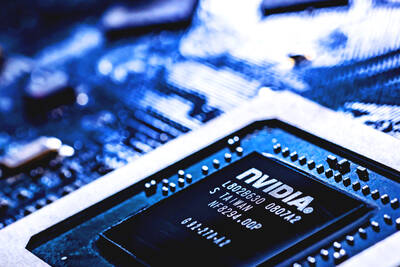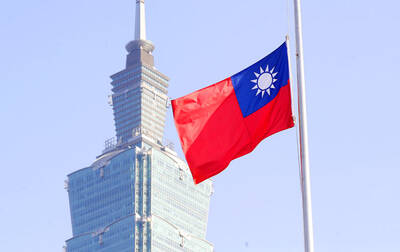The New Taiwan dollar turned in a strong performance yesterday, gaining 0.6 percent, or NT$0.215, to NT$34.60 against its US counterpart at the close of trading, the highest level in almost three weeks, dealers said.
The NT dollar opened at NT$34.815 and fluctuated between NT$34.54 and NT$34.87 on what traders called a technical rebound that might last until the end of this month.
A currency dealer linked the NT dollar’s upturn to a sharper increase by the South Korean won, whose showing is widely considered a critical factor in valuating the NT dollar.
“For the foreseeable future, the two currencies will remain locked in a tight race in a bid to vie for export orders amid the downturn,” the dealer said by telephone on condition of anonymity.
Turnover was US$1.213 billion on Taipei Forex and the amount stood at US$397.5 million on the smaller Cosmos Foreign Exchange, leaving an aggregated volume of US$1.61 billion, the two companies data showed.
The dealer dismissed reports the NT dollar’s increase was due to the narrowing decline in exports last month, noting the data showed foreign trade remained drab despite rush orders from China. He believed the NT dollar would trade between NT$34.5 and NT$35 this month and head down to mirror the recession.
“There is no overnight fix for economic woes,” the dealer said.

When Lika Megreladze was a child, life in her native western Georgian region of Guria revolved around tea. Her mother worked for decades as a scientist at the Soviet Union’s Institute of Tea and Subtropical Crops in the village of Anaseuli, Georgia, perfecting cultivation methods for a Georgian tea industry that supplied the bulk of the vast communist state’s brews. “When I was a child, this was only my mum’s workplace. Only later I realized that it was something big,” she said. Now, the institute lies abandoned. Yellowed papers are strewn around its decaying corridors, and a statue of Soviet founder Vladimir Lenin

UNIFYING OPPOSITION: Numerous companies have registered complaints over the potential levies, bringing together rival automakers in voicing their reservations US President Donald Trump is readying plans for industry-specific tariffs to kick in alongside his country-by-country duties in two weeks, ramping up his push to reshape the US’ standing in the global trading system by penalizing purchases from abroad. Administration officials could release details of Trump’s planned 50 percent duty on copper in the days before they are set to take effect on Friday next week, a person familiar with the matter said. That is the same date Trump’s “reciprocal” levies on products from more than 100 nations are slated to begin. Trump on Tuesday said that he is likely to impose tariffs

HELPING HAND: Approving the sale of H20s could give China the edge it needs to capture market share and become the global standard, a US representative said The US President Donald Trump administration’s decision allowing Nvidia Corp to resume shipments of its H20 artificial intelligence (AI) chips to China risks bolstering Beijing’s military capabilities and expanding its capacity to compete with the US, the head of the US House Select Committee on Strategic Competition Between the United States and the Chinese Communist Party said. “The H20, which is a cost-effective and powerful AI inference chip, far surpasses China’s indigenous capability and would therefore provide a substantial increase to China’s AI development,” committee chairman John Moolenaar, a Michigan Republican, said on Friday in a letter to US Secretary of

ELECTRONICS BOOST: A predicted surge in exports would likely be driven by ICT products, exports of which have soared 84.7 percent from a year earlier, DBS said DBS Bank Ltd (星展銀行) yesterday raised its GDP growth forecast for Taiwan this year to 4 percent from 3 percent, citing robust demand for artificial intelligence (AI)-related exports and accelerated shipment activity, which are expected to offset potential headwinds from US tariffs. “Our GDP growth forecast for 2025 is revised up to 4 percent from 3 percent to reflect front-loaded exports and strong AI demand,” Singapore-based DBS senior economist Ma Tieying (馬鐵英) said in an online briefing. Taiwan’s second-quarter performance beat expectations, with GDP growth likely surpassing 5 percent, driven by a 34.1 percent year-on-year increase in exports, Ma said, citing government